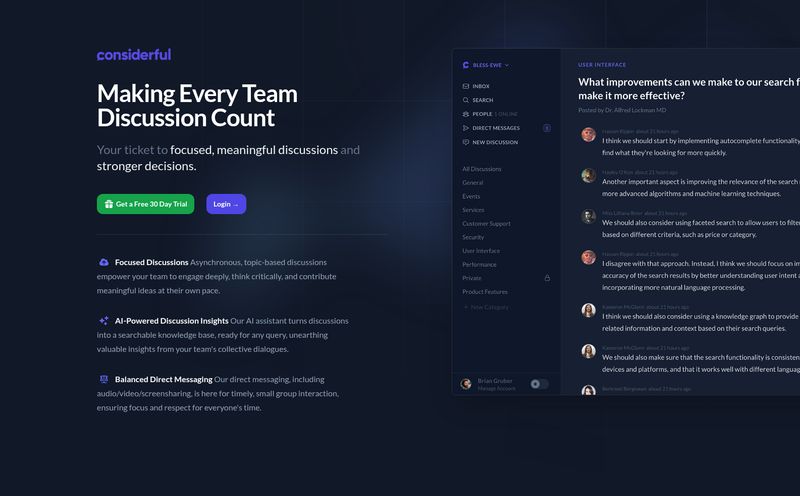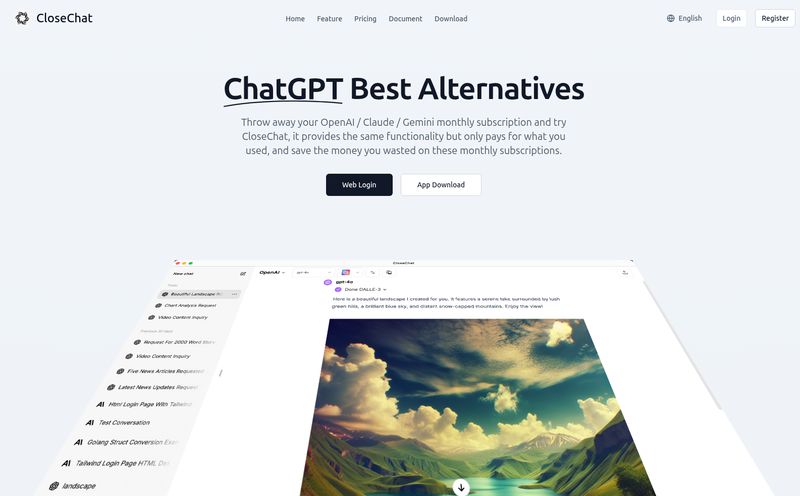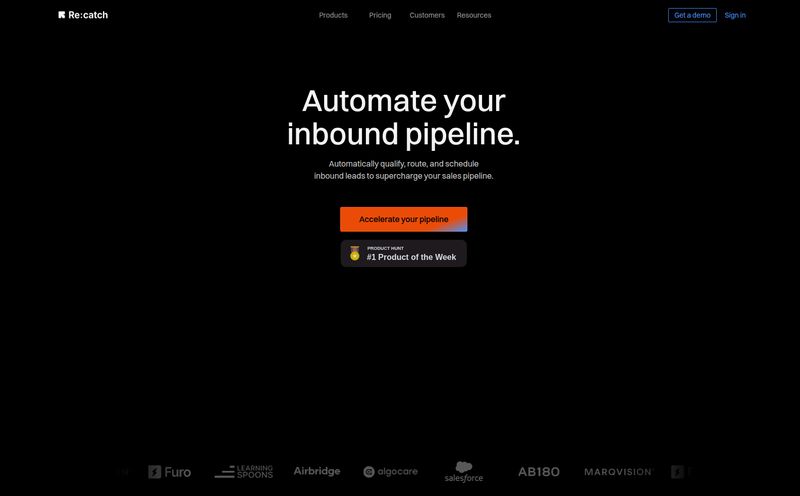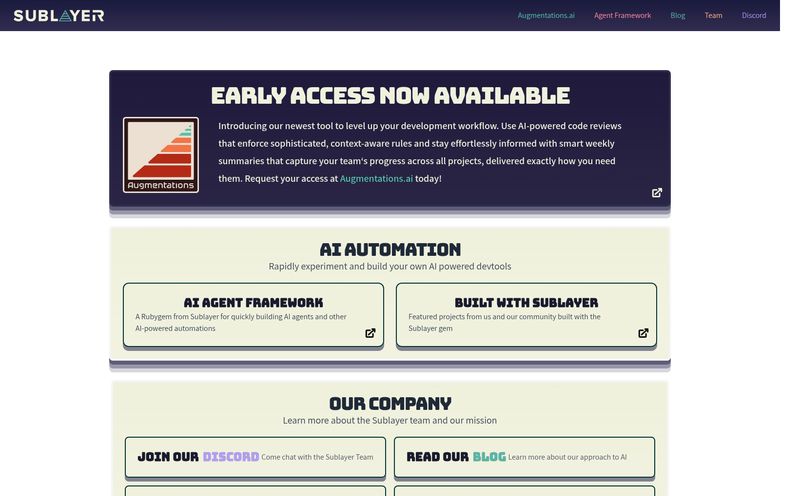For years, I've been neck-deep in the world of SEO, traffic, and all the glorious, grinding work that comes with it. The dream has always been automation. Not just the simple 'if this, then that' stuff we've had for a decade. I'm talking about smart, AI-driven automation that can actually think and handle complex, repetitive work.
We've all been there, right? Staring at a spreadsheet at 2 AM, manually copying and pasting data, thinking, “There has to be a better way.” Then AI exploded onto the scene, and it felt like the solution was right there... but locked behind a wall of Python scripts and API documentation that might as well be written in Elvish.
So when I stumbled upon a platform called Gumloop, which claimed to offer powerful, no-code AI automation with a visual builder, my cynical-veteran-blogger senses started tingling. Was this another overhyped tool, or was it the real deal? I had to find out.
So, What Exactly is Gumloop?
Think of it like this: if Zapier gave us the building blocks for basic automation, Gumloop gives us a full-blown LEGO Mindstorms kit specifically for AI. It’s a no-code platform where you visually build workflows that connect to powerful AI models like those from OpenAI and Anthropic. You drag, you drop, you connect the dots, and you create an automated process that can do some seriously heavy lifting.
Instead of writing code, you’re essentially drawing a flowchart of the task you want to automate. Scrape a website for data, feed that data to an AI to summarize it, then have the AI reformat that summary and pop it into a Google Sheet. That entire chain, which would normally require a developer, can be built by just connecting a few nodes on a screen. It’s designed to be AI-native from the ground up, and that feels different.
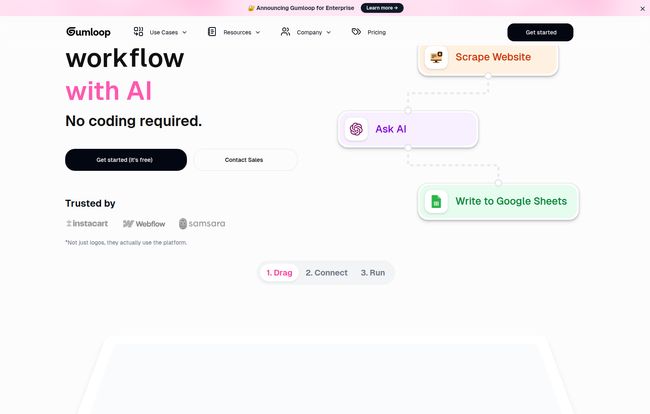
Visit Gumloop
First Impressions: Building My First AI Workflow
Signing up was straightforward. They have a free plan, which is always my first stop. No credit card, no funny business. I appreciate that. The interface is clean, maybe a little intimidating at first glance if you're completely new to visual builders. It’s not quite as immediately intuitive as, say, Canva, but it’s not meant to be. This is a power tool.
The core concept is simple: Drag. Connect. Run. You pull nodes onto a canvas. A 'Scrape Website' node, an 'Ask AI' node, a 'Google Sheets' node. You draw lines between them to tell the data where to go. It’s strangely satisfying, like solving a puzzle. My first attempt was a bit clumsy, I’ll admit. There’s a slight learning curve in understanding how data flows from one step to the next and how to properly 'prompt' the AI node. But after about 30 minutes of tinkering, something clicked. It started to make sense. The platform felt less like a rigid program and more like a sandbox for my ideas.
The Gumloop Features That Actually Matter
A lot of platforms throw a million features at you. Most of them are just noise. With Gumloop, a few core elements really stood out to me as being genuinely useful.
The Visual No-Code Builder
This is the heart of Gumloop. The ability to see your entire automation laid out visually is a huge advantage. You can spot bottlenecks, debug issues, and understand the logic without reading a single line of code. It allows for parallel processing, meaning multiple steps can run at once, which is a massive speed boost compared to the sequential, one-by-one approach of many other automation tools.
Seriously Powerful AI Integrations
This isn't just a gimmick. Gumloop integrates directly with the big players—OpenAI (think GPT-4) and Anthropic (think Claude). This means you’re not using some watered-down, proprietary AI. You’re tapping into the most advanced models on the market and wrapping them in your own custom logic. This is what separates it from simpler tools; you have direct access to the raw power.
Community Workflows for a Head Start
Sometimes you don't want to reinvent the wheel. Gumloop has a library of pre-built workflows from other users. Things like a 'Keyword Researcher', a 'Social Media Content Calendar Generator', or an 'SEO Title (A/B)' tool. This is brilliant. You can grab a template, see how someone else built it, and then customize it for your own needs. It's a great way to learn and saves a ton of time.
Enterprise-Ready Security and Scale
Honestly, I usually skim past this stuff, but for anyone running a real business, this is critical. Gumloop is SOC 2 Type 2 and GDPR compliant. This isn't just some weekend project; it's built to handle sensitive data securely. And they talk a big game about running at “massive scale,” which is reassuring if you plan to build business-critical automations on their platform.
Let's Talk Money: Gumloop Pricing Breakdown
Alright, the all-important question: what's this going to cost me? The pricing structure seems pretty fair and is based on 'credits,' where different actions consume a certain number of credits.
| Plan | Price | Key Features |
|---|---|---|
| Free | $0 / month | 1,000 credits/month, 5 concurrent flows, great for testing. |
| Starter | $97 / month | 30,000 credits/month, 1 seat, for solopreneurs or small teams. |
| Pro | $297 / month | 75,000 credits/month, 10 seats, for growing businesses. |
| Enterprise | Custom | Custom credits and seats, dedicated support, advanced security. |
My take? The Free plan is genuinely useful. 1,000 credits is enough to build and test a few core automations to see if it works for you. The jump to Starter at $97 feels reasonable if you're replacing manual work that costs you more than a few hours a month. For agencies or larger teams, the Pro plan makes sense. It’s an investment, for sure, but the potential ROI from automating high-volume, complex tasks is significant.
The Good, The Bad, and The AI
No tool is perfect. Let's be real. Here's my honest breakdown.
What I Genuinely Love
The freedom. The feeling of having an idea for an AI tool and being able to actually build a prototype in an afternoon without bugging a developer is incredible. It democratizes AI development. I love the visual nature and the fact that it’s built for scalability from the start. It doesn't feel like a toy.
Some Potential Hurdles
As I mentioned, there's a slight learning curve. It's not a 'one-click and you're done' solution. You need to invest a little time to understand the logic. Second, the pricing could be a factor if you're running millions of operations. You have to be smart about your credit usage. Finally, you are reliant on third-party AI models. If OpenAI has a bad day, your workflow might feel the ripple effects, but that's true for almost any AI-powered tool today.
My Final Verdict: Should You Give Gumloop a Shot?
After spending a good amount of time with Gumloop, I’m genuinely impressed. It’s not just another automation tool; it feels like a step in a new direction. It successfully bridges the gap between powerful AI capabilities and the people who can actually benefit from them—the marketers, the founders, the operations managers.
Is it for everyone? Probably not. If all you need is to post your blog to Twitter automatically, it might be overkill. But if you have complex, multi-step processes that you wish an AI could handle, Gumloop is one of the most promising and accessible platforms I've seen. It’s a tool for builders, for tinkerers, for anyone who looks at a repetitive task and thinks, “A robot should be doing this.”
My advice? Don’t just take my word for it. Sign up for the free plan. Pick one annoying, repetitive task in your business and try to automate it. You might just be surprised at what you can build.
Frequently Asked Questions
- 1. Do I need to know how to code to use Gumloop?
- Absolutely not. That's the whole point! It's a completely no-code platform with a visual, drag-and-drop interface. If you can draw a flowchart, you can build an automation.
- 2. What AI models does Gumloop integrate with?
- Gumloop integrates with top-tier AI models, primarily from OpenAI (like GPT-3.5 and GPT-4) and Anthropic (like Claude). This gives you access to some of the most powerful language models available.
- 3. How is Gumloop different from Zapier or Make?
- While Zapier and Make are fantastic for connecting apps in a linear fashion, Gumloop is built specifically for creating more complex, AI-native workflows. It allows for parallel processing (running multiple steps at once) and is designed to handle intricate logic that involves AI decision-making, making it more of a flexible AI development platform than a simple app connector.
- 4. Is Gumloop secure for my business data?
- Yes, security seems to be a major focus. The platform is SOC 2 Type 2 and GDPR compliant, which are high standards for data security and privacy. This makes it suitable for enterprise use and for handling sensitive information.
- 5. Is there really a free plan? What's the catch?
- Yes, there's a genuinely free plan that gives you 1,000 credits per month. It's designed for you to test the platform, build some basic automations, and see its value for yourself. There's no catch, but if you need to run more tasks or at a higher volume, you'll need to upgrade to a paid plan.
